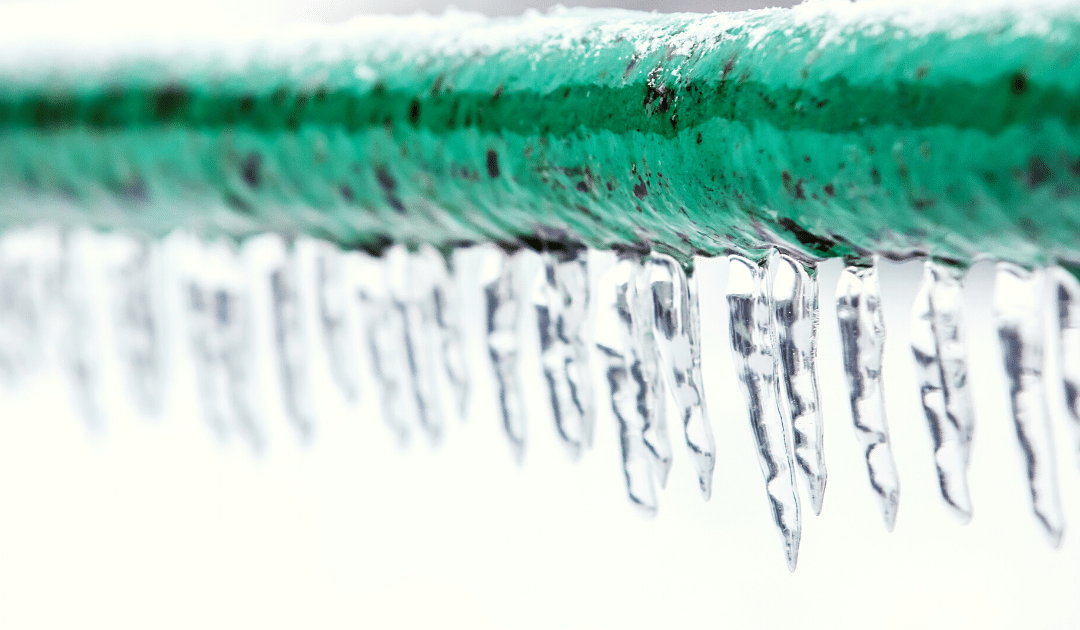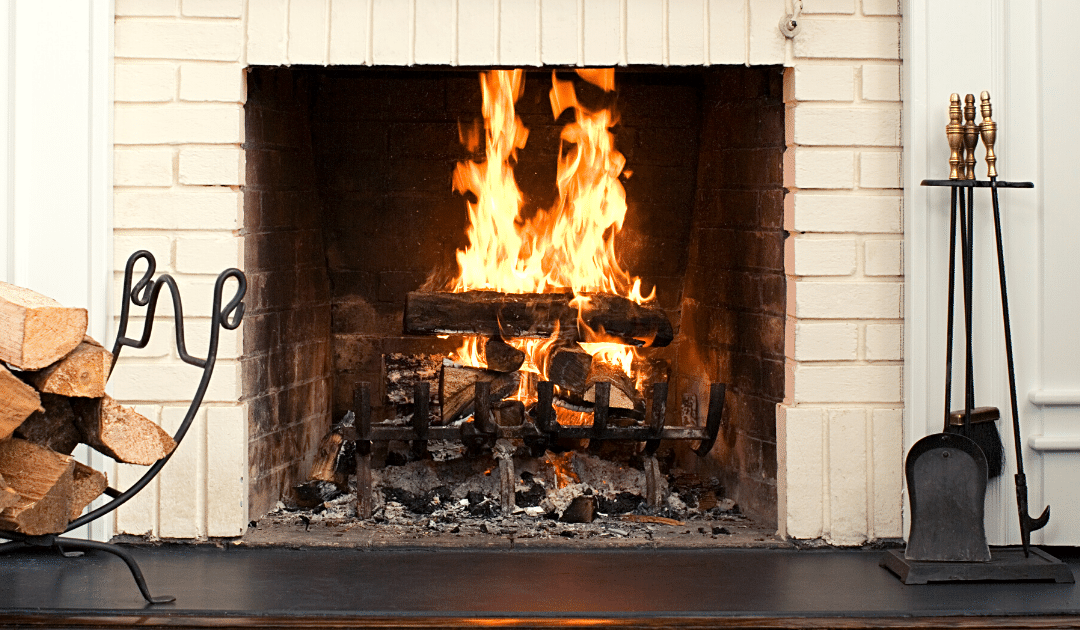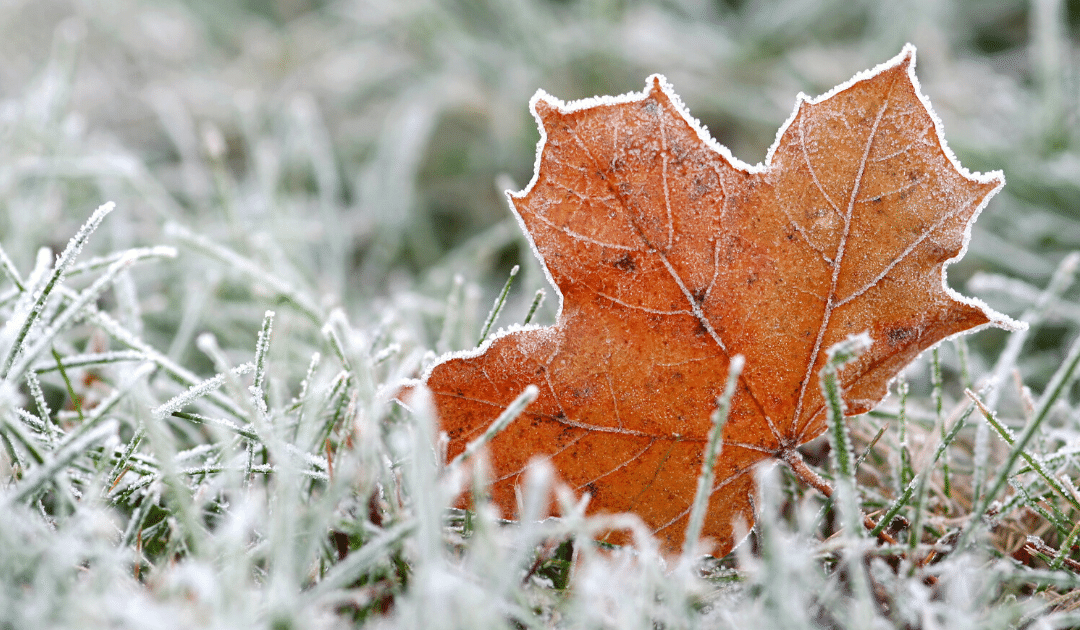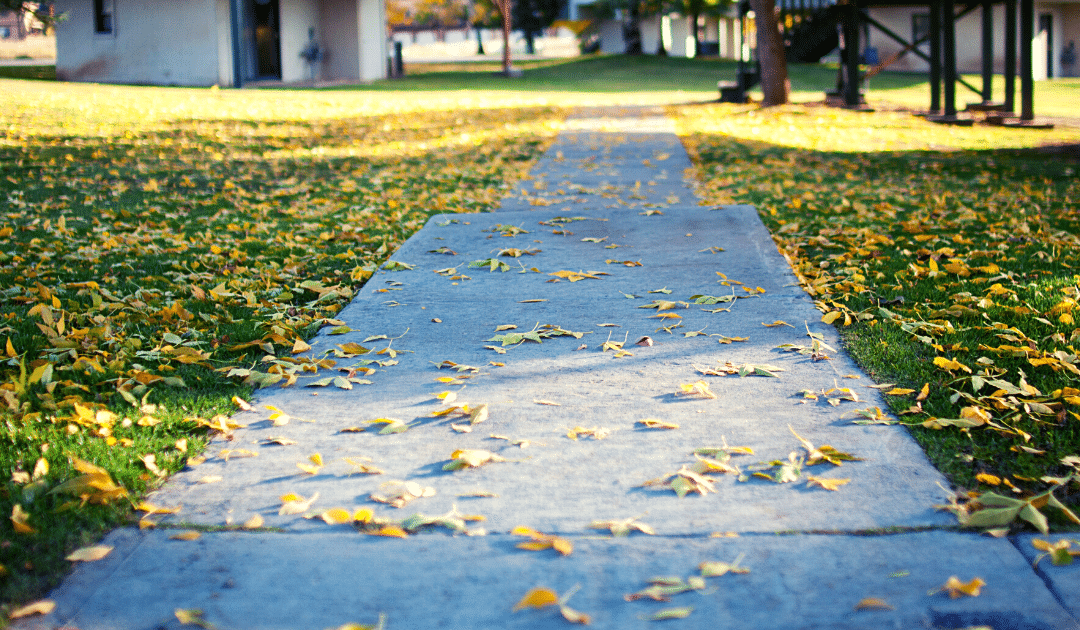
by California Casualty | Homeowners Insurance Info |
Water expands when it freezes. This simple law of nature underlies all the damage, repair costs, and headaches associated with frozen or burst pipes.
The pressure of expanded, frozen water in your pipes can cause bulges, cracks, and burst joints, leading to leaks, flooding, and other expensive damage to your home.
By using the checklist below, you can take steps to prevent issues inside and outside your home and be ready to act if you suspect a frozen pipe.
Interior Checklist – Protect Pipes Inside Your Home
Use this list to take steps around your home to prevent frozen pipes.
-
- Keep interior doors open – Open bathroom and kitchen cabinets to let warmer air circulate around the pipes.
- Close the garage – If you have water lines in the garage, make sure the door’s closed so they stay warmer. Consider adding insulation to them if they’re accessible.
- Seal gaps – Seal up holes and cracks where pipes run through floors or walls to keep cold air from getting in and cooling the pipe. You can use caulk or spray foam insulation. If possible, seal from both the outside and inside.
- Add extra insulation – Attics, basements, and crawl spaces are typically cold, so adding insulation will keep temps up a bit. Fitting exposed pipes with foam rubber or fiberglass can be an easy and inexpensive option.
- Allow a drip – Letting cold water drip from the faucet (especially of exposed pipes) will help prevent pipes from freezing. A trickle is all you need.
- Keep the heat on – Especially during especially cold spells. Keep thermostat set to the same temp both day and night. A slightly higher heating bill for this short time is preferable to potential repair and damage costs.
Exterior Checklist – Protect Pipes Outside Your Home
After surveying your home’s interior, take this checklist outside.
-
- Hose patrol – You’ll need to remove, drain and store outdoor hoses. Shut off water to outdoor faucets, then turn on the faucet so any remaining water drains. Disconnect hose from the faucet, coil it into a 2-foot diameter loop, and store inside to protect from extreme temperatures.
- Drain the swimming pool – Drain the pool, pool water supply lines, and the sprinkler supply lines. Make sure to follow the manufacturer’s instructions and never use antifreeze in the lines.
- Consider heat tape – Heat tape is the umbrella term for a variety of cords and cables that you can use to insulate outdoor pipes to keep them from freezing. They can also be used to prevent ice dams in your gutters. There are self-regulating and thermostat-controlled models, and all are customized to the pipe(s) you’re protecting. If you go this route, make sure to do your research and follow the manufacturer’s instructions exactly.
If You Suspect a Frozen Pipe
Vigilance during cold weather is key, as you can often head off the worst damage if you catch a freeze in time. Here’s how to thaw a suspected frozen pipe:
-
- Locate the problem pipe – If you turn on a faucet and get no water or only a trickle, the pipe it’s connected to may well be frozen.
- Open the faucet – This will relieve the pressure on the pipe as you thaw it. If the faucet has handles for both warm and cold water, open both.
- Apply heat – Always start at the faucet and work down the pipe. Depending on the location of your pipe, use an electric hair dryer, portable space heater, towels soaked in hot water, or an electric heating pad (NEVER an open flame) to gently warm it back up. Have a family member watch for activity at the faucet. Apply heat until the full water pressure is restored.
- Check other pipes – Depending on how your plumbing system is set up, one frozen pipe may mean several (if they’re connected). Check all that you can and repeat the above process for any that are frozen.
Not only can frozen pipes cause expensive structural damage to your home but they can also cause health and safety issues for your family, pets, or livestock by cutting off your freshwater supply.
Use the above tips before and during cold weather events to keep your home and family safe. Check out more tips on preventing frozen pipe here.
This article is furnished by California Casualty. We specialize in providing auto and home insurance to educators, law enforcement officers, firefighters, and nurses. Get a quote at 1.866.704.8614 or www.calcas.com.

by California Casualty | Homeowners Insurance Info |
Nothing says cold weather coziness like a warm, glowing fire in the fireplace. While indoor fires keep us warm and provide comfort, they can also pose hazards.
Follow these tips to keep your fireplace and chimney in safe working order.
Maintain, Clean & Inspect
-
- Check your alarms – Before you light your first fire of the season, make sure your carbon monoxide and smoke detectors are working properly. For the former, use the “test” button on the unit; for the latter, see our testing and safety tips here.
- Get an annual inspection – Hire a certified chimney inspector to closely inspect your chimney, fireplace, and/or woodburning stove, clean them and let you know about any needed repairs.
- Keep it clean – Keep the hearth free of debris, decorations, and other flammable materials. Be sure to remove ashes after every fire – excess ash in the fireplace can reduce airflow for the next fire, which leads to more smoke.
- Be careful with ash – When cleaning ashes, remember that they can stay hot for a long time – give them plenty of time to cool. When cooled, put them in a covered metal container and wet them down. Put the container outside and let sit for three days before disposing of it.
Burn Safely
-
- Use a screen – Fireplace screens are metal accessories designed to prevent flying sparks and embers from starting a house fire. Always use one when burning a fire.
- Consider fireplace doors – Slightly different from screens, glass fireplace doors are meant to help your fire burn better and produce more heat. They should be fully open when starting a fire and when the fire is burning strongly. After the fire dies down a bit, close the doors completely to minimize the amount of air going up the chimney.
- Know your damper – Dampers are often confused with flues. The flue is the tube inside the chimney through which the smoke escapes. The damper is the device inside the flue that you can open or close. When starting a fire and while it’s burning, make sure the damper is open. When your fireplace is not in use close the damper to prevent warm air from escaping.
- Make sure the fire’s really out – Never leave a fire unattended. Before going to bed or leaving the house, make sure it’s had plenty of time to die down and that it’s fully extinguished.
- Be smart about what you burn – Only burn dry, seasoned wood, and kindling in your fireplace. Do not burn plastic, cardboard boxes, wrapping paper or trash, some of which can emit toxins into your home. And never burn your Christmas tree, as burning needles can easily send sparks spraying
Practice Fire Safety from the Outside In
-
- Observe the 30-foot rule – That’s how far firewood should be stacked away from your home.
- Install a chimney cap – This prevents snow, rain, and other moisture from entering your chimney and keeps out animals that may try to nest inside.
- Prune branches – Make sure you’ve pruned any branches that are close to your chimney.
- Remove dry debris – Your roof and chimney should be clear of pine needles, leaves, and other flammable debris.
For additional tips and an easy-to-print infographic on Chimney Safety click here.
The sooner you know that your fireplace and chimney are in tip-top shape, the sooner you and your family can enjoy evening fires, board games, hot chocolate, and all the rest that make winter so cozy.
This article is furnished by California Casualty. We specialize in providing auto and home insurance to educators, law enforcement officers, firefighters, and nurses. Get a quote at 1.866.704.8614 or www.calcas.com.

by California Casualty | Homeowners Insurance Info |
Although wildlife can be cute from a distance, that doesn’t mean you want them moving in. Besides general annoyance, animals that become unwitting roommates can bring costly damage and risk of disease.
The first step in staying critter-free is to understand how and why they may be attracted to your home. Usually, it’s to secure safety, warmth, and proximity to food.
Here are the eight most common “intruders,” their methods for getting in, and some tips for keeping them out.
Squirrels
Did you know that squirrels’ teeth never stop growing? To keep them “trimmed,” squirrels must constantly chew. If they get into your home, it’s open season: they will gnaw on anything that isn’t metal. If a squirrel does make it in, you’ll probably hear it before you see it. Listen for gnawing sounds; also look for wood chips in unexpected places, water damage on ceilings and walls, damage to the roof or beams, and droppings in the attic.
Raccoons
Anyone who’s had raccoons in their yard knows their penchant for destruction. Tipped-over garbage bins, dug-up gardens, and pilfered animal feed. But the real damage comes when they enter your home. They can destroy insulation, leave urine and feces everywhere, and gnaw electrical wires. Make note that female raccoons start scouting denning locations to give birth during late winter.
Rodents
Especially during winter months, mice and rats seek shelter so they can nest and forage for food. They can carry various diseases which can be transmitted through scratches, bites, and droppings. In addition to the hygiene issue, they can chew through wiring, wood, pipes, and brickwork. They even put your home at risk of fire due to sparks from chewed wires.
Skunks
People and pets are afraid of skunks for good reason – their powerful, redolent smell can linger for months. So focus on skunk prevention rather than removal. Often lured by food or cozy-looking spots under porches and decks, skunks can not only damage your home but also injure your pets. These critters are notorious diggers and burrowers, who can create holes in your lawn, garden, and under your home. They also like to access crawl spaces by tearing away their protective screens.
Birds
Birds start looking for shelter to build their nests in springtime. If they choose your home as theirs, they’ll probably go for your chimney, deck, attic, shed, or soffit. They may even nest in grills, vents, or elsewhere in your yard. They can cause structural damage, create a mess of debris, and leave unhygienic droppings. The damage is made worse when birds nest together.
Bats
Attics are a favorite place for bats to roost. One or two aren’t usually an issue, but if you suddenly have a colony on your hands, you have a problem. They can chew on wires and walls and destroy insulation. Their droppings cause an unpleasant odor and may cause histoplasmosis in humans.
Groundhogs
These furry critters will not only ransack your garden but can cause considerable damage by burrowing under your home. Over time and left unabated, their tunnels can loosen and shift the ground, causing structural hazards. This most commonly happens with homes built on slab foundations.
Opossums
You really don’t want your home in an opossum’s sights. They will make a mess of your pantry and tear at your walls and insulation to collect nesting materials. They can injure your pet, steal their food, and also spread disease to your household. Their smell is a close second to raccoons. To prevent this marsupial intruder, pay close attention to your basement, attic, garage, shed, and crawl spaces – all places they tend to take up residence. They usually get in through the siding, chimney, or loose screens or vents.
Tips to Keep Wildlife Out:
-
- Make sure trash and pet food are in bins and securely closed with a tight lid and/or bungee cords or ropes.
- Seal shut any holes or open or loose entry points into your home. Check the roof, siding, foundation, exterior walls, and trim. If your deck or porch is open underneath, seal it up.
- Cover and secure compost piles; never compost meat scraps.
- Trim tree limbs that can act as “highways” to your roof.
- Keep gutters clean and free of debris.
- Install chimney caps and steel screens on vents.
- A sturdy fence that’s buried at least 18” underground and 5 ft above ground will stop animals from burrowing under and jumping over.
- Check out the options for repellants – they come in the form of chemical sprays, motion-activated sprinklers, and sound emitters (the latter can annoy pets, though).
By knowing how wildlife sizes up your home and taking precautions to safeguard it and remove temptation, you’ll be well on your way to keeping wildlife in the wild.
Wondering if your home insurance policy covers damage caused by animals? Call your California Casualty representative today!
This article is furnished by California Casualty. We specialize in providing auto and home insurance to educators, law enforcement officers, firefighters, and nurses. Get a quote at 1.866.704.8614 or www.calcas.com.

by California Casualty | Homeowners Insurance Info |
Fall is here! The leaving are changing colors and soon the temperature will drop, but is your home ready for the cooler weather?
Follow our 10 indoor and outdoor tips below to help get your house ready for the winter months ahead.
Indoor:
Use Heavy Duty Drapes – Replacing your regular curtains with thermal drapes will help keep your home nice and warm.
Insulate Windows – Caulk and seal gaps around your windows to prevent cold air from leaking in.
Check Your Heating System – Change your filters and have an HVAC contractor come out and make sure everything is running properly.
Have Your Fireplace Inspected – Have your chimney cleaned once a year by a professional before you use it. They will check for any cracks and clean any soot build-up from the previous winter season.
Test Your Detectors – With homes all sealed up for the winter, there is a much greater chance for carbon monoxide to build up in your home. Make sure all detectors have new batteries and are working properly.
Outdoor:
Check Your Roof – Before the snow and ice, make sure your roof is damage-free and there are no shingles that are missing or loose.
Add Mulch to the Landscaping – Protecting your plants and landscaping from the harsh winter weather by adding a few additional layers of mulch.
Clean Out Your Gutters – Fall leaves and debris can accumulate in your gutters and make it impossible for water, snow, and melting ice to pass through. That is why it is important to clean and clear them out a few times a year.
Trim Tree Branches – Winter storms can wreak havoc on trees, especially dead limps, which can easily fall on your home with a gust of wind or snow/ice accumulation. Trim tree branches over your home and remove dead limbs.
Prep Your Lawn and Lawn Care Equipment – Fall and Spring are the best time to seed your lawn. After, be sure to apply fertilizer with winterizer. It is also a good idea to drain gas from any mower or weed eater that you will not use until the spring.
Stay warm this cool-weather season, and for more cool weather tips, check out our Fall Preparation Tips for Your Home blog here.
This article is furnished by California Casualty. We specialize in providing auto and home insurance to educators, law enforcement officers, firefighters and nurses. Get a quote at 1.866.704.8614 or www.calcas.com.

by California Casualty | Auto Insurance Info, Homeowners Insurance Info |
If you’re like most boat owners, you probably only use your boat a few months out of the year. And after all those summer trips are done, and your boat’s cleaned up and ready for storage, you might be tempted to cancel the insurance.
After all, if your boat won’t even be on the water, why would you need coverage?
Turns out, there are some compelling reasons to keep your insurance throughout the year, not the least of which is that it can actually save you money in the long run. Here are 4 top reasons.
1. Accidents Don’t Have an Offseason
More than half of the claims are filed for accidents that occur between September and January. The majority of those are for theft, vandalism, fire, and flooding. Boats are typically unattended during this time, which increases accident risk. When you carry boat insurance, these claims are covered by comprehensive coverage, costing far less than out-of-pocket payments would for repair and replacement in the event of an insurance lapse.
2. It May Be Required
If your boat is financed by a lender, you may be obligated to carry insurance year-round. Even if you own your boat outright, some marinas may require boats on the premises to be insured.
3. Don’t Count on Your Homeowner’s Policy
Many boat owners assume that damage to their boat is covered under their homeowner’s policy. Most times this isn’t the case, as the boat would probably only be protected if damage occurred while on the covered property. And even then, a homeowner’s policy might not fully cover the damage and/or leave the owner with coverage gaps (for example, many homeowners policies have length and horsepower limits that apply to boats). Boat insurance policies are crafted to meet specific needs and protect against risks inherent to boating.
4. It Makes Financial Sense
Depending on your insurer, signing up for a full 12-month policy can make you eligible for discounts or loyalty benefits, saving you money over the long term. Also keep in mind that many insurers already adjust the off-season monthly premiums to be lower than the on-season ones, so an annual policy, in the end, does offer better protection dollar for dollar than one for just several months. And don’t forget that as your boat ages you may find it more difficult to secure insurance if you cancel your policy. Finally, if you insure your boat with the same company as your car or homeowner’s insurance, you can most likely get a multiple policy discount.
Just as with homeowners and car insurance, a policy protecting your boat against damage and liability not only provides peace of mind but is a wise financial decision. And given the risks specific to boats, choosing a year-round policy is even smarter.
This article is furnished by California Casualty, providing auto and home insurance to educators, law enforcement officers, firefighters, and nurses. Get a quote at 1.866.704.8614 or www.calcas.com.

by California Casualty | Consider This, Homeowners Insurance Info |
Fall is the perfect time of year! The summer heat begins to fade, leaves don their annual colors, football games take over the weekend, and pumpkin-flavored everything hits the shelves. fall preparation
However, it also serves as a reminder, that as the days grow shorter and the leaves start to fall, now is the ideal time to look around your home and get prepared for the oncoming winter. Fall’s mild temperatures and adequate daylight provide an opportunity to check the heater, repair gutters, and add extra insulation to the attic. An early autumn storm or blizzard is no time to learn you have leaks or other problems.
The Insurance Information Institute estimates that winter-related damage causes over a billion dollars in insurance losses annually. So, enjoy the nice weather and your pumpkin spiced latte while you can. Just don’t forget to look ahead. Prevent your home from being a winter-storm statistic and make the necessary preparations to your home this fall.
Fall Preparation Checklist:
- Have your heating system checked and cleaned.
- Inspect ceilings, windows and outer walls for cracks.
- Change air filters.
- Check your pipes and plumbing.
- Inspect your roof for wear or damage and clean the gutters.
- Install weather stripping and caulk around windows and doors.
- Seal up foundation and driveway cracks.
- Check your fireplace and chimney for cracks or leaks.
Look around your deck or patio and yard. Now is the time to clean and store seasonal outdoor furniture and flower pots, drain sprinkler systems, trim trees and shrubs, fertilize lawns and mulch gardens. Before your lawnmower goes into hibernation, schedule a time to have it serviced. If your snowblower needs some TLC after its summer break, bring it in with your mower and tackle two chores at once.
During the fall it is also important to make sure your home is fire safe. Hundreds of fires break out each day during the autumn and winter months. Check your smoke and carbon monoxide detectors and make sure everything is working properly. The National Fire Protection Association warns carbon monoxide poisonings also climb during the fall and winter months.
Smoke and Carbon Monoxide Detector Preparation Checklist:
- Install smoke alarms and carbon monoxide detectors in every bedroom, outside each separate sleeping area, and on all levels of the home.
- Test all smoke and carbon monoxide detectors and replace the batteries.
- Have all heating equipment and chimneys cleaned and inspected.
- Keep all flammable material at least three feet from heat sources.
- Check fire extinguishers. Replace or have them serviced as needed.
- Know and practice home escape routes.
A vital preparation step for any season is to review and understand your homeowners or renters insurance policy. Make sure you know what is covered under your policy, if you need to up your coverage, or add additional coverage for the coming winter months.
This article is furnished by California Casualty. We specialize in providing auto and home insurance to educators, law enforcement officers, firefighters and nurses. Get a quote at 1.866.704.8614 or www.calcas.com.






